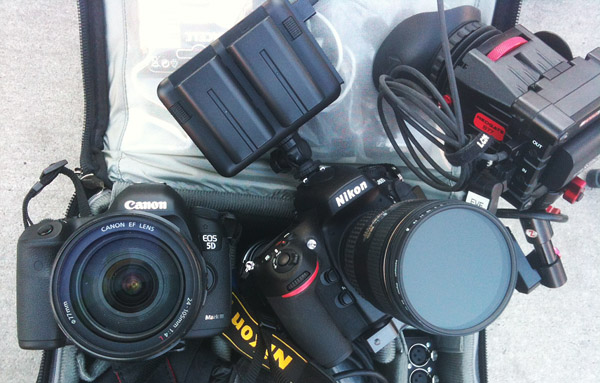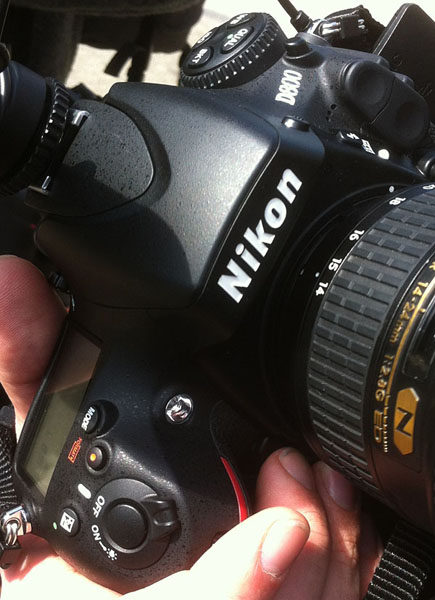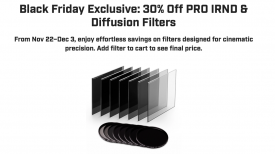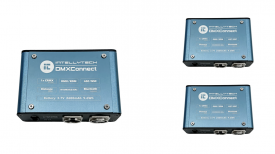By Dan Chung
Before the advent of the Nikon D800 and D4 there was no choice if you wanted a full frame DSLR shooting 1080P video – it had to be a Canon. This past week, I and several other members of the photo and video press and bloggers have been guests of Nikon Europe in New York on the “48 hour challenge”: getting our hands on production models of the D800 and being allowed to shoot what we wanted.
Kudos to Nikon for inviting myself and others who are not primarily Nikon shooters. I believe it shows a grown up attitude that recognises many pro shooters are essentially brand agnostic. I own and love the Canon C300 and now the 5D mkIII but also own and use a Sony F3 and also Panasonic GH2s. It is all about the right tool for the right job and Nikon want to prove that they have a place in the pro video world.
Even more kudos for giving us direct access to some of the designers and having them answer our questions. It’s great that Nikon are genuinely listening to professional video shooters and what they want to see in video DSLRs.
It was also good to see my friends from Redrockmicro on hand supporting the event. They brought along their new Blue rig for DSLR which looks to be a very nice solution for mounting a DSLR to a rig and providing plenty of mounting points for accessories and top rails.
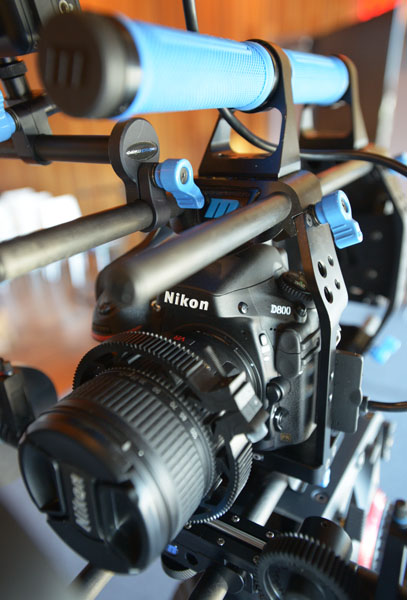
Of course, the thing everyone wants to know right now is how the D800 stacks up against its closest rival – the Canon 5D mkIII. Again I have to thank Nikon for letting me pitch the two cameras up against each other as we travelled around the sights of New York. So how do they compare?
Testing
I’ll be the first to admit that the scientific way to evaluate these cameras is by using charts at a proper test facility. Sadly I don’t have ready access to one and only had the D800 for the duration of the New York trip.
I had to settle for the next best thing and try for some real world A/B comparison shots. In order to do this it was essential to use the same lens on both cameras – any other way and you are essentially testing lens/camera combinations and not the camera. Luckily I have the excellent 16-9.net Nikon to Canon EOS lens adapter which allows mounting of Nikon glass on a Canon. The same Heliopan Variable ND was used on all outside shots and care was taken not to change its setting when switching cameras.
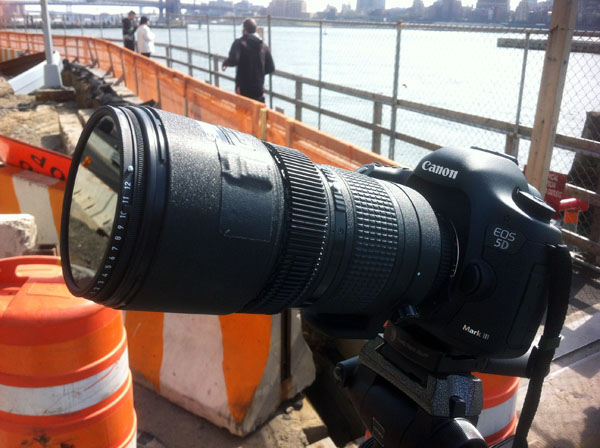
Both cameras were set at 1080/25P and the Canon was tested with both IPB and ALL-I recording. The ALL-I file is used for comparison unless otherwise stated.
On both cameras, I chose the neutral Picture Style/Picture Control settings with sharpness and contrast dialled down to zero and the same kelvin value for white balance. This does not mean the settings were identical as the baseline for zero varies wildly between cameras – there is no way to know exactly what in-camera sharpening is going on (even at zero setting).
To make it even harder to do direct comparisons the 5D mkIII seemed to be around a stop to 2/3 of a stop darker than the D800 at any given ISO setting. I decided to set shutter speed, ISO and aperture the same on both as there was no other more accurate way to set them without determining the exact sensitivity difference between sensors at the same ISO.
Lastly, trying to match framing using the rear LCDs is hard as the D800 crops the video image slightly left and right and the 5D mkIII does not. Below is an example of just how much the D800 crops the scene when in full frame vs. the 5D mkIII. If I were to run the test again I would use a monitor to adjust frame.

All round, this is not a perfect like for like test, but is a fair one that represents my overall experiences of the cameras.
Detail
For this test I used the same Nikon 80-200 f2.8 AFD lens with both cameras. ISO is set at 100 and I attempted to match framing but the 5D mkIII shots are slightly looser. Below are video frame grabs from both cameras both at full size (click to enlarge) and 100% crops.
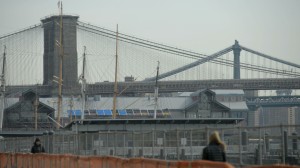
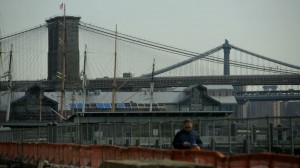
The D800 has a sharper image that has slightly more definition. As observed elsewhere on the web, the Canon 5D mkIII files respond well to sharpening in post, as can be seen here.
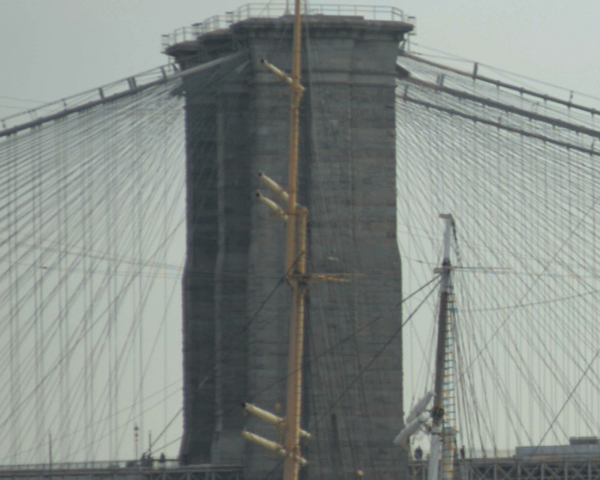
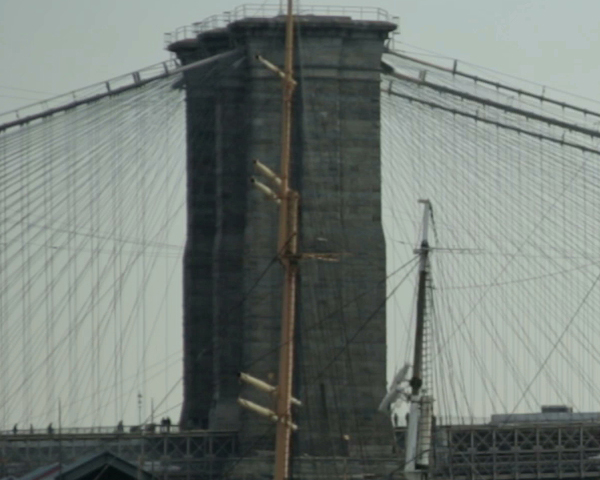
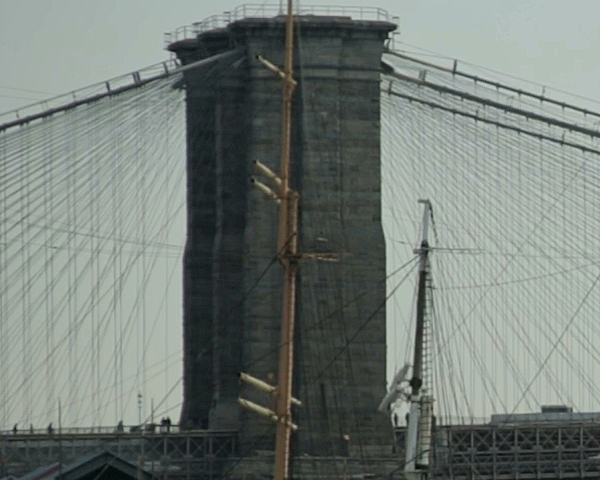
This does give the D800 an advantage for news shooters on tight deadlines who do not want to have to post-process files. In-camera sharpening can be turned up on the 5D mkIII, but this introduced some haloing effects and a slightly artificial quality to the image that I didn’t like – a possible compromise is to turn up sharpness just one step above zero.
Of course you can also sharpen the Nikon D800 image and again reveal more perceived detail.
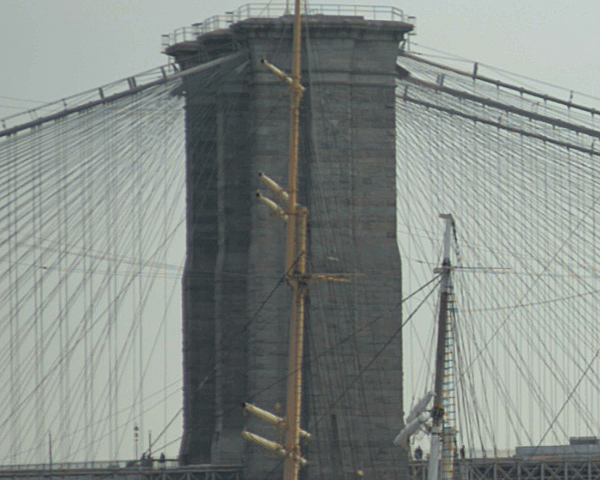
In most situations where I shot the two cameras side by side (in Neutral) the Nikon resolved slightly more detail. Changing Picture Styles/Controls will affect the image and the Nikon D800 perceived detail advantage may be as much to do with in-camera sharpening levels as anything else. The ability to accurately compare detail is also hampered by the exposure differences when set at the same ISO and the slight difference in crop between the cameras.
All this said, on every occasion where I tested the cameras side by side, I felt that the Nikon was producing a sharper image – but it was very close. I can only assume that other testers that have found wider differences in detail – giving the Nikon a greater lead – are not using the same lenses or similar settings.
The D800 also shows greater detail in the shadows – something that Nikon’s engineers were very keen to stress when comparing against the 5D mkII and that seems to hold for the 5D mkIII as well. (Bear in mind both cameras may be able to achieve more tonal range by using custom Picture Styles/Controls). Below is a short clip that demomstrates just how much detail the D800 is hanging onto in a wide tonal range shot (again please login to Vimeo and download the original file for assessment).
Below is another example, this time with the 17-35mm f2.8 lens. The Nikon again looks ever so slightly sharper. Both videos below are from unaltered original files and can be downloaded if you are signed into Vimeo. I had to load the IPB version from the Canon file as Vimeo won’t work properly with the ALL-I version – subjectively I would say the ALL-I version is slightly sharper than the IPB version but still not as sharp as the Nikon.
What I find very interesting is that the D800 does not seem to suffer much from having lower bitrates than the 5D mkIII in either IPB or ALL-I encoding. The D800‘s H.264 format regularly records at bitrates around 22-25 Mbps mark. The 5D mkIII is often slightly higher in IPB mode and double or even tremble the bitrate in ALL-I mode. I can only assume that the H.264 encoding of the D800 is pretty good.
Rolling shutter
As a real world test of rolling shutter we strapped the 5D mkIII and Nikon D800 together as closely as possible on an improvised Redrockmicro rig and did a spot of filming at Gleasons gym. To keep the test fair I used a Nikon 14-24mm f2.8 on the D800 and another Nikon 14-24mm with the Novoflex adapter on the 5D mkIII. This time I tried to match the 5D mkIII framing to the tighter crop of the D800 by zooming in the lens slightly.
The 5D mkIII was set to ALL-I recording and the D800 was recording internally – both were set at 1080/25P. Lighting was slightly mixed and I chose to set both cameras to daylight white balance. The exposure differences between the two cameras were again evident even though ISO, aperture and shutter speed setting were the same. I would use the video below purely to assess motion and not other aspects of image quality. (The files were converted to Prores HQ using 5DtoRGB before editing in FCP7. The finished export uploaded to Youtube is also Prores HQ.)
My assessment would be that both cameras fare very well here and that rolling shutter in this real world example is pretty well controlled.
Moire
I shot some walls and wide scenes with large amounts of detail. The first is a close up of buildings in Manhattan shot on a Nikon 80-200 f2.8 AFD lens. The Canon is again set to ALL-I recording. The D800 does show some signs of moire; in this example it is not too bad, but the clear winner is the Canon 5D mkIII which shows virtually no moire. Click on the picture to open at full resolution.
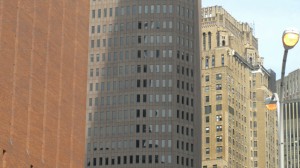
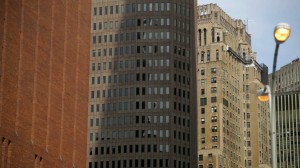
The second example is the Manhattan skyline shot with a Nikon 17-35mm f2.8. Again, the Canon is the winner in terms of moire (but it’s also a good example of how the D800 has more apparent resolution).
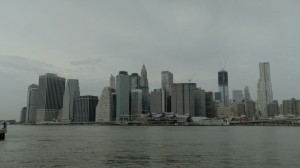
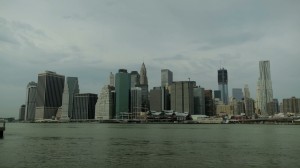
I asked the Nikon technicians how the D800 was downscaling the sensor output to create the video image but they were unwilling to disclose any details. Canon engineers clearly have a few tricks up their sleeve with the way the Digic 5+ processor handles moire and should be congratulated for that.
I found moire issues with the D800 to be quite distracting in some detailed high contrast shots and no problem in others, especially classic shallow depth of field shots with blurry backgrounds. Having shot with the 5D mkII for several years I would say that moire turns up in D800 shots exactly when I expect it. Some shooters will feel comfortable working around this – others will find it difficult to use.
Below is an example of bad D800 moire to illustrate my point. Again, the settings were neutral Picture Control and minimum sharpness and contrast.
Low light performance
For the low light testing I shot indoors at ISO 3200 using the Nikon 80-200 f2.8 AFD lens and white balance set at tungsten. The 5D mkIII was set with noise reduction off (although I’m not sure this actually affects the image). I also threw in shots from the Nikon D4 and also an DX crop example from the D800.
The exposure difference between the cameras is apparent straight away – the 5D mkIII image is darker (and redder). The D800 also has more noise than the 5D mkIII whether in-camera noise reduction is enabled or disabled. The D800 images do appear slightly more detailed, as I have now come to expect.
The D4 image is much closer to the 5D mkIII and its 2.7x crop mode is surprisingly good. Both the 5D mkIII and the D4 are substantially less noisy than the D800 at ISO 3200.
The video below has had all files converted to Prores 422 HQ using Rarevision’s 5DtoRGB convertor. It has then been exported as a H.264 from FCP. Please log into Vimeo and download the original H.264 to get a better idea of relative quality. If anyone is able to host the Prores version for download, please let me know, as I don’t have the bandwidth on the site.
EDIT – Many thanks to Matt Jeppsen of FreshDV for agreeing to host the Prores version here http://www.freshdv.dreamhosters.com/downloads/5D3_vs_D800_vs_D4_low_light.mov , simply right click and download. The original files and the Prores converts actually show more noise on the D800 files as the H.264 encode masks some of it.
Overall, I would say that noise is similar and not very bothersome on both cameras up to about ISO 1600, after which the Canon takes a clear lead.
Controls
If you are used to Nikon DSLRs then the D800 has a familiar feel and control layout. Until recently I owned a D700 and this camera feels much the same. It’s very nice in the hand and it’s easy to keep a firm grip. The body is reassuringly made of metal and feels expensive.
One issue I found using the D800 was that when turning on the camera and prior to video (liveview) activation the camera shows exposure settings for stills. When you turn the video mode on, the exposure changes to a different set of video settings and does not carry over from what you previously had set in stills mode. This is annoying and confusing as on a Canon 5D mkII I often like to set the camera up before engaging video mode.
The image on the D800 can be magnified prior to recording to check focus and you can zoom in far more than on the 5D mkII. That said, this function does not work on either camera once you start recording. Magnification is activated with a dedicated button on the left of the screen, but can alternatively be configured to the big toggle on the right side of the screen which I found much easier to use.
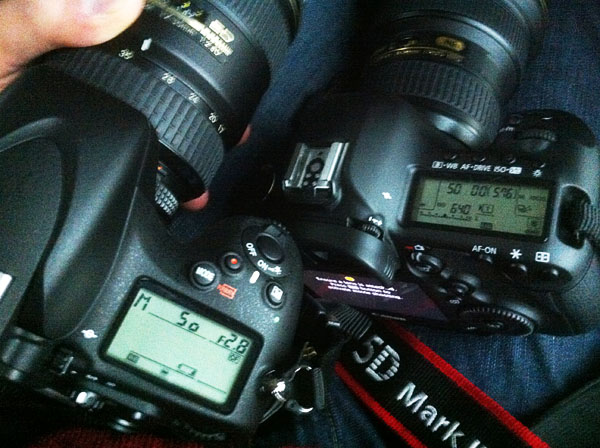
The video trigger can be reassigned to the main shutter button (like the 5D mkIII) and this is how I prefer to use it – the dedicated record button I found tricky to locate in a hurry without taking your eye away from the screen.
The rear LCD screen on the D800 appears lovely and sharp – all ready for a Zacuto Z-finder to be added for even better viewing. I found the 5D mkIII screen was easier to see outdoors without a Z-finder – but then realistically you should be using a Z-finder or shade anyway in those conditions.
The on-screen display of the D800 is quite good but annoyingly I couldn’t figure out how to have an exposure meter on screen when in video mode. It’s something I have got very used to using on the 5D mkII and now mkIII. I hope this is something that is easily fixed on the Nikon.
One thing I absolutely love about the D800 is that you can customise it to allow control of aperture via the lens aperture ring of older Nikon AF lenses like the 17-35mm f2.8 and 80-200 f2.8 AFD which I used for this test. If declicked, these lenses will offer a totally smooth aperture transition. It’s a shame all the newer G lenses don’t have aperture rings.
There is a feature called Power aperture which is supposed to offer similarly smooth transition using newer G lenses when pressing a few buttons on the camera. I found this quite fiddly to use in practice and not as simple as the old fashioned lens aperture ring.
I personally found the control layout of the 5D mkIII easier to use than the D800 (partly because I am used to a Canon) – essentially many often used functions of the Canon such as ISO and white balance can be set one-handed on the 5D mkIII. On the D800 this requires both hands on the camera as many of the control buttons are located on the camera’s left side.
It’s not all roses for the 5DmkIII either, as I also found it harder to control than the original 5D mkII – Canon have relocated the magnification button from under your right thumb to a new position left of the LCD or the Set button (basically the same as the D800).
Audio
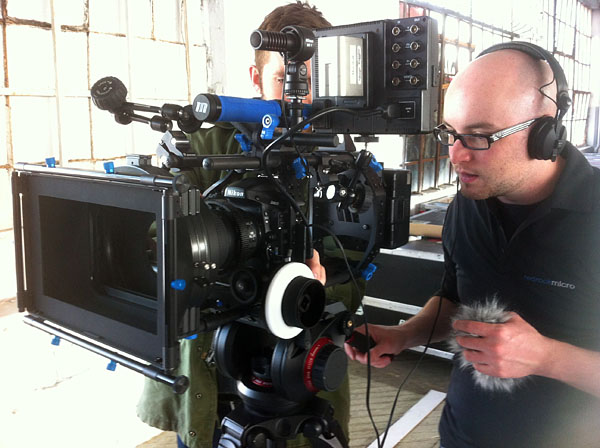
The D800, along with the 5D mkIII, has a minijack microphone input, an output for headphone monitoring and on-screen audio level meters while recording. These are features I have been wanting on a DSLR for some time. The headphone output on the D800 was nice, loud and easy to adjust. I prefer it to the headphone output from the 5D mkIII, which is quieter and harder to use in loud environments.
On the downside, the D800 does not allow you to change the audio levels while recording and they are effectively locked unless you are using an external mixer, audio recorder or audio adapter to feed the camera. The 5D mkIII not only allows you to change recording level – but to do it silently using their new touch sensitive rear dial. I didn’t have enough time to fully test the quality of audio recording on the D800 using external mixers or mics. Hopefully I can do more with this in future. One thing that did surprise me was the quality of the D800 internal mic. Check out the video below, which uses only the internal mic.
Audio is something both manufacturers still need to improve, although it’s great that both can have levels visible while recording.
HDMI
The clean HDMI output of the D800 is one of its most heralded features. Nikon told me the output was 8 bit 4:2:2. Sadly I was unable to test this properly during my time with the camera. Nikon had brought a Atomos Ninja HDMI recorder along with the latest firmware for testing, but it seemed that whatever I tried there was severe ghosting on the image. Hopefully this is something that can be resolved in the near future by firmware update.
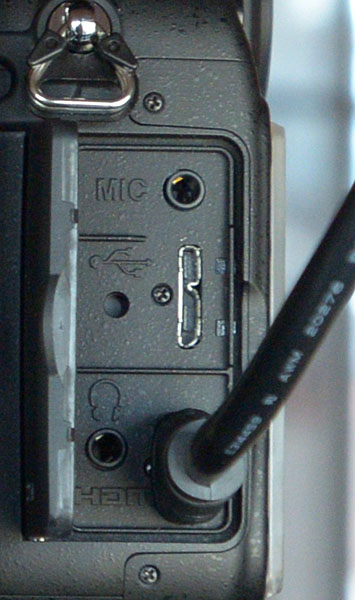
The D800 is capable of sending a 1080/24/25/30P signal out via its HDMI port but the CF and SD cards MUST be removed from the camera to do this. If there is a card in the camera, the HDMI reverts to being a 720P output. I was told by the Nikon technicians that this is a technical limitation and that there is no way that 1080/24/25/30P can be recorded both to card and HDMI. For news and documentary shooters I can see this being a real problem. Mini HDMI really isn’t the strongest connector on the planet and the connection to an external recorder were to shake loose during a shoot you would risk losing everything with no in-camera backup.
The HDMI images recorded to the Ninja that I did see also appeared to be more crushed and have less detail than those recorded internally to the CF card. I hope this is some kind of glitch and hopefully I will know more from Nikon soon.
One other thing that I did find extremely annoying is that when using internal CF cards and an external monitor or EVF the camera’s HDMI output needs to switch output resolution from 1080 to 720 every time you hit record. This results in a blackout for a second or two while your device adjusts – very similar to the blackout on a 5D mkII when it goes from 1080 to 480 on record start. On the D800 it seems the only way to avoid this is to actually record in 720P.
I also had a number of issues when connecting the Ninja and Zacuto EVF to the D800. Occasionally the combination refused to enter video mode, most likely because of hardware ‘handshake‘ issues. Each time it could be resolved by cycling the camera in and out of live view a few times, but it was very annoying none the less. If you own older HDMI gear and are hoping to use it with the D800 then I suggest you try it all out before purchasing.
Colour performance and management
One thing that the above videos highlight is that the 5D mkIII and D800 do not represent colours in the same way. Hopefully someone will shoot a few colour charts soon so we can see exactly what is going on and possibly correct for both cameras.
By default I would characterise the Nikon as having a slightly yellowish push to the images and the Canon as slightly pinkish/reddish. Which you find more appealing is subjective although I personally find the Nikon look in mixed lighting (out of the box) to be less natural than the Canon.
Colour and gamma management are areas which DSLR manufacturers have been weak on thus far. Canon have benefited from being around longer with third parties like Technicolor and Rarevision stepping in to fill the void. That said, I had serious problems with gamma issues when I first received my 5D mkIII, with various Prores convertors reading the files very differently and producing Prores files with wildly varying gammas. Canon were not forthcoming in supplying information about what the camera was producing and it was only by a process of elimination that I got to a workable solution using Rarevision’s 5DtoRGB.
Nikon too need to get with some colourists and third party vendors to make colour workflow painless for D800 users. If Picture Controls and conversion tools can be made allowing the D800 to better match other popular cameras then the Nikon is a much more attractive proposition.
Conclusions
The Nikon designers clearly had the 5D mkII in their sights as the camera to beat when designing the D800. I would go as far as to say they were largely successful and the D800 is better than the 5D mkII at most things. They could not of course know what the 5D mkIII was going to be like and in fact my 5D mkIII was the first one that the Nikon designers on our trip had a chance to play with.
Essentially the output from the D800 and 5D mkIII is very close. I would give it to Nikon for sharpness and the addition of the crop mode. The Canon has a clear win in terms of moire and low light performance. Personally I prefer the control layout and the colour rendition from the Canon (especially under mixed lighting) – others may prefer the Nikon.
As a multimedia camera for newspaper shooters who are going mainly to web in lower resolutions then frankly both Nikon D800 and Canon 5D mkIII are great and way better than any previous DSLR.
For Nikon based photojournalists shooting video, the D800 is clearly a blessing. For the first time they have Full HD, a choice of frame-rates and an image that will not disgrace itself when compared to the competition. I know of several shooters who use Nikon for stills and Canon 5D mkIIs for video – now they have the option to use just Nikon.
Shooters with Canon systems and a lot of lenses are probably better off with the 5D mkIII.
For broadcast shooters and filmmakers the D800 is also an interesting proposition. Nikon stills lenses have been very popular with many shooters who use adapters to mount them onto Canons, Sony, Panasonic and Red cameras (even though they focus the opposite directions to regular Cine or Canon lenses). The D800 offers a platform that uses these lenses natively and pretty much all older Nikon lenses will work on the camera. The lens mount combined with the near full frame image and the improved HDMI and audio monitoring options mean that the D800 has great potential for use anywhere where a DSLR form factor is beneficial. If footage can be graded to fit with Alexas, Reds and Sony F3 images then the D800 may well become the B cam/crash cam of choice for many. Moire is still a problem but many shooters will primarily use the camera for shallow DOF with blurred backgrounds in the same way that the original 5D mkII was used.
For an all-round camera for video the 5D mkIII would suit my needs best. Moire is the main factor in this; even though the Nikon is a bit sharper, the moire is too noticeable in many shots for my taste. I would not be happy using the D800 as my only camera as I quite often have to shoot wide scenes with lots of detail. If the D800 can be modified using Picture Control to give me an image closer matching the Canon C300 or the Sony F3 I would seriously consider getting one for B-cam use. I would use it for shots where the sharpness is a benefit and moire is not an issue.
Kudos to Nikon for making a camera that is in some aspects the best of the bunch. The Nikon designers have given buyers choice – and choice is a good thing. Both D800 and 5D mkIII are fun to use and capable of beautiful results in the right hands.
What is really interesting is where Nikon go next. They have signalled that they are willing to offer video features that other manufacturers seem unprepared to. I wonder if they have the resolve and the resource to step up to the mark and deliver something truly spectacular in the future?

